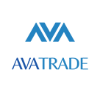Dive into our ranking of the best platforms for trading Nvidia stocks, highlighting brokers that offer comprehensive stock trading tools and detailed insights. Ideal for experienced traders and newcomers interested in technology stock investments.
BEST FUTURES TRADING PLATFORMS
Check out our ranking of the best platforms for futures trading strategies. These brokers stand out for their access to global futures markets, advanced trading tools, and ideal resources for futures traders. With growing demand in the capital, as well as in cities like Monterrey or Guadalajara, people are looking for safe and reliable alternatives to manage their money smartly. This ranking presents the top three alternatives for operating, investing, and protecting the value of your Pesos, which are hard-earned. This ranking presents the three best options available today in the country.

Ranking Methodology
In compiling our ranking of the best futures trading platforms, we have followed an exhaustive and meticulous methodology to ensure that our recommendations are reliable and align with the specific needs and demands of futures traders.
Our evaluation process is based on several key criteria, each crucial to determining the platforms that stand out in the futures trading market.
Transparency and Regulatory Compliance: Regulatory compliance and transparency are vital in futures trading. We assessed each platform's adherence to industry standards, regulatory licenses, and the clarity of their trading conditions. Platforms regulated by esteemed financial authorities and those that provide transparent fee structures and trading conditions scored higher in our ranking.
Platform Technology and Trading Tools: A robust trading platform is essential for futures trading. We evaluated the technological sophistication of each platform, including trading tools, charting capabilities, and advanced features like automated trading and risk management tools. Platforms that offer a mix of cutting-edge technology and user-friendly interfaces were preferred.
Market Access and Variety of Futures Contracts: We considered the range of accessible markets and the variety of futures contracts. Platforms that provide access to a wide range of commodity, index, and other futures markets were ranked higher for catering to a broad range of trading interests and strategies.
Leverage and Margin Requirements: Leverage is a critical aspect of futures trading. We examined the leverage options available on each platform and how they balance high potential returns with the risks associated with margin trading. Platforms offering flexible and competitive leverage terms while maintaining reasonable margin requirements were favored.
Account Opening for Residents: Several foreign trading platforms do not enable accounts for users. Therefore, it is most important to ensure they accept residents. These options allow you to open an account with your ID and a simple proof of address, making the process accessible for anyone.
Understanding Leverage in Futures Trading
Leverage: Refers to the use of borrowed capital to increase the potential return of an investment. In futures trading, leverage allows traders to hold a large contract value with relatively small capital.
Impact of Leverage: High leverage can amplify gains but also magnify losses. Traders need to understand the level of leverage a platform offers and how it aligns with their risk tolerance and trading strategy.
Margin Requirements in Futures Trading
Margin: This is the collateral the investor must deposit to maintain a futures position. It is not a down payment but a security bond to cover potential losses.
Initial Margin vs. Maintenance Margin: The initial margin is the amount required to open a position, while the maintenance margin is the minimum amount that must be maintained in the trading account.
Comparing Platforms Based on Leverage and Margin
High Leverage Platforms: Some platforms offer high leverage, which can be attractive for traders looking to maximize potential returns. However, this also means greater risk, especially in volatile markets.
Low Leverage Options: Other platforms may offer lower leverage, appealing to more conservative traders who wish to limit risk exposure.
Variations in Margin Requirements: Margin requirements can vary significantly between platforms. Some may offer lower initial margins, facilitating entry into trades, but this can also lead to quicker margin calls if the market moves against the trader.
Balancing Leverage and Margin with Risk Management
Understanding Risk: Effective risk management is essential, especially when trading with high leverage. Traders should have a clear understanding of potential losses and have strategies to mitigate these risks.
Using Stop-Loss Orders: Utilizing stop-loss orders can help manage the risk of trading with high leverage and margin.
Regulatory Influences
Regulatory Standards: Regulatory bodies often set limits on leverage and margin requirements. Platforms that adhere to strict regulatory standards can offer more stability and protection to the trader.
Platform Compliance: Compliance with regulatory standards is a key aspect to consider when comparing platforms, as it reflects their commitment to maintaining fair and secure trading practices.
YOU MAY ALSO BE INTERESTED





